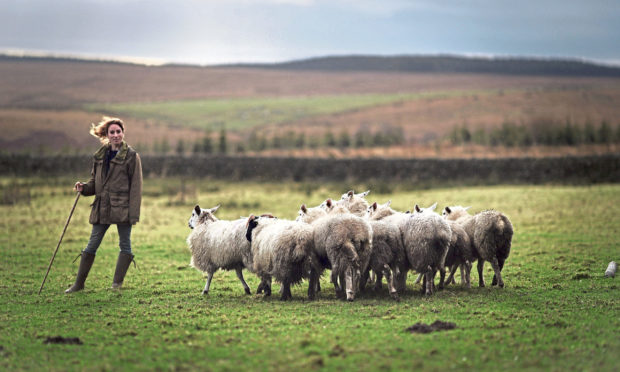Lady Claire Macdonald says Scots sheep farmers lead the field with their quality produce, and provides some recipes to help us celebrate this at home.
Uninterrupted television watching during these long evenings of endless lockdown is one of the few good things of this present time.
Two programmes give us such great pleasure that they have inspired my subject for today – This Farming Life, and Our Yorkshire Farm.
Both inspire, with the sheer dedication of individuals for their farming lives, and in spite of the relentlessness of their 365 days each year, no matter the trials and tribulations thrown at them, chiefly by the weather.
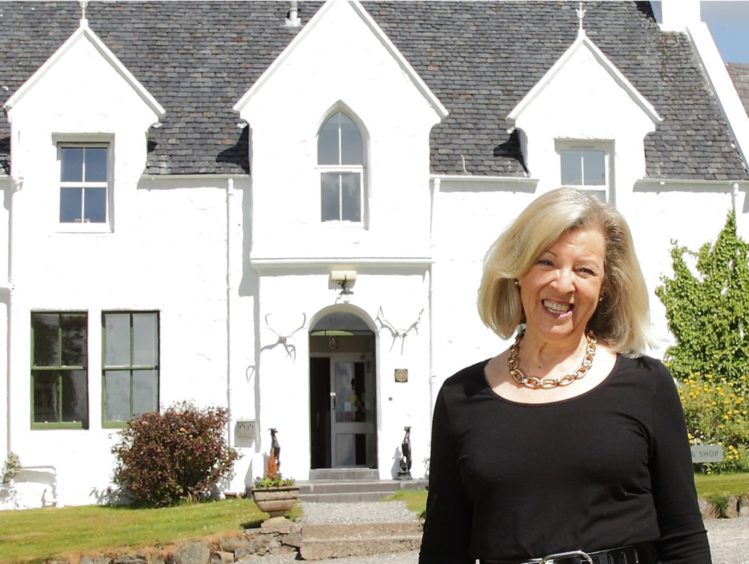
Godfrey and I are humbled, on a nightly basis, as we sit in comfort beside our fire, all cosy, whilst watching the cheerfulness and extreme hard work their lives involve.
But in tandem with their physical and mental work is the depth of knowledge of, and affection for, their individual animals.
Even when they are tending between 800-900 sheep, they know them as individuals, they know their quirks of character, and they really mind about them.
The lamb meat we buy comes from the best lamb raised in the world, Scotch lamb. I have always, always maintained this.
My father, following his retirement from the Royal Navy, became a hill sheep farmer in the Dales. He farmed the Rough Fell breed on our Yorkshire farm – their extensive flock are Swaledale. I used to think that these various breeds produced the best lamb eaten in the world.
Then I married Godfrey, came to live in Skye, and tasted Scotch lamb. It is even better, and I started from a very high taste standard.
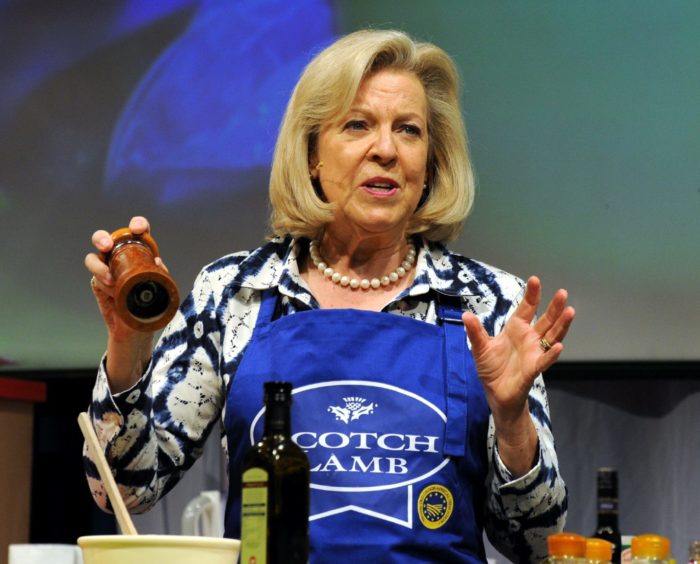
I have worked for so very many years, and with such pride, for Quality Meat Scotland. I was even appointed a lamb ambassador, a title I hold with huge pride. If I had to choose, lamb is my red meat of choice.
There is no harmful cholesterol to be found in meat which has been chiefly fed grass. Like Scotch lamb and, for the most part, beef. Lamb – and beef – is the easiest digested form of protein. Lamb is widely versatile, in all its various cuts.
We should always remember lamb offal (ruined by lengthy cooking), lamb’s liver and kidneys are fast food because they need flash-frying, they cost so little and they are an excellent form of protein.
Today I give you a recipe – my own recipe not a traditional recipe – for Lancashire hot pot with black pudding.
Before those of you inclined to do so take umbrage at a recipe from Lancashire, let me remind you that I, too, am from Lancashire! It uses the cheapest cut of lamb, scrag end, takes long cooking and is full of carrots, onions and potatoes. It is enriched by diced black pudding.
And here I admit that I very much prefer black pudding made north of the border to my native Lancashire black pud, which has larger chunks of fat.
My favourite black pudding is made by my favourite of butchers, Frasers, in the High Street, Dingwall.
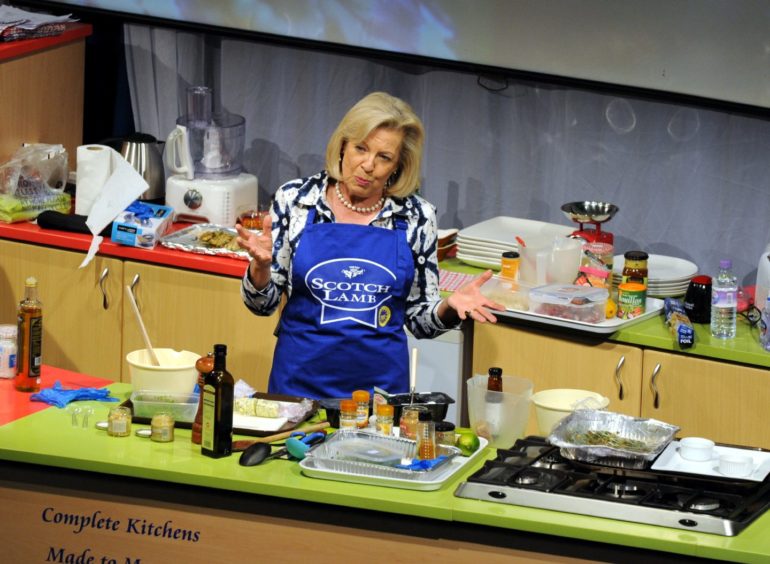
One of our favourite suppers consists of baked sliced black pudding eaten with steamed broccoli or, better still, purple sprouting broccoli dressed with lemon flavoured olive oil from M&S, and sliced fried eating apples. Delicious.
Lamb, cut from the leg so quite lean, slow braised in a tomato sauce with garlic and best-quality black olives (optional) is delicious, especially when eaten with boiled basmati rice mixed with grated lemon rind, olive oil, chopped parsley and very finely chopped garlic.
But today, my message to each of you who reads this is, and coming from my heart – and tummy – that we must appreciate the best lamb in the world and buy and use it.
And by doing this, we will, and must, support those exceptional people who farm sheep.
They deserve nothing less than our regular and most fervent support.
Lancashire hot pot with black pudding
(Serves 6)
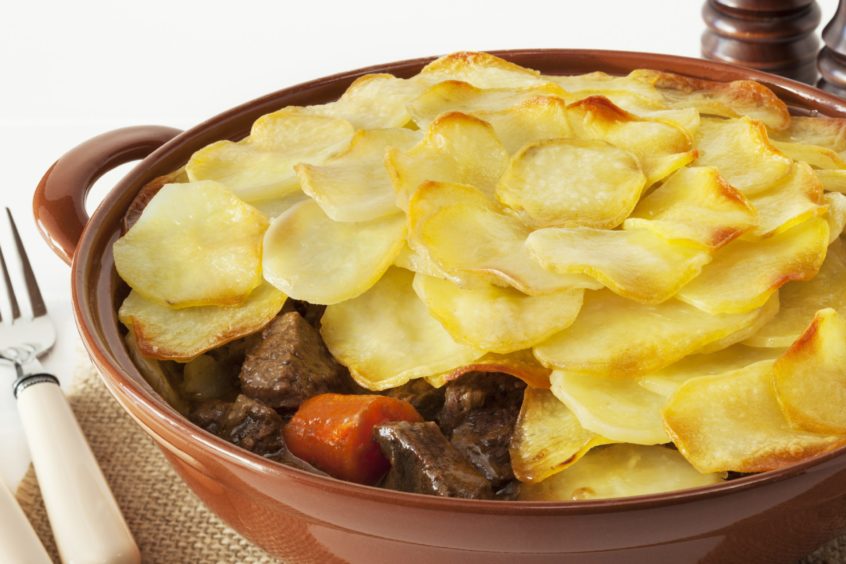
Ingredients
- 900g of scrag end of lamb, trimmed of excess fat and cut into large chunks
- 6 medium-sized onions, skinned and quartered
- 9 medium-sized carrots, peeled and trimmed at either end, and chopped on the diagonal into 2cm lengths
- 8 medium-sized peeled Rooster potatoes
- 500g black pudding, outer plastic wrap removed and the pud cut into large, diced chunks
- 1½ tsp salt
- About 15 grinds of black pepper
Method
- Cut six of the potatoes into chunks and cut the remaining 2 into even-sized slices.
- In a large pan, layer up the prepared ingredients, starting with the potato chunks.
- It doesn’t matter the order thereafter.
- Finish by placing the sliced potatoes, overlapping each other, on top.
- Scatter the salt and pepper over the surface.
- Add enough cold water until it reaches just below the sliced potatoes.
- Cook in the oven at a low, moderate heat (170°C/150°C Fan/325°F or Gas Mark 3) for 4 hours.
- Cool, then reheat at the same temperature for a further 2-3 hours as the flavours are much better with two cookings.
Lambs’ liver with onion
(Serves 6)
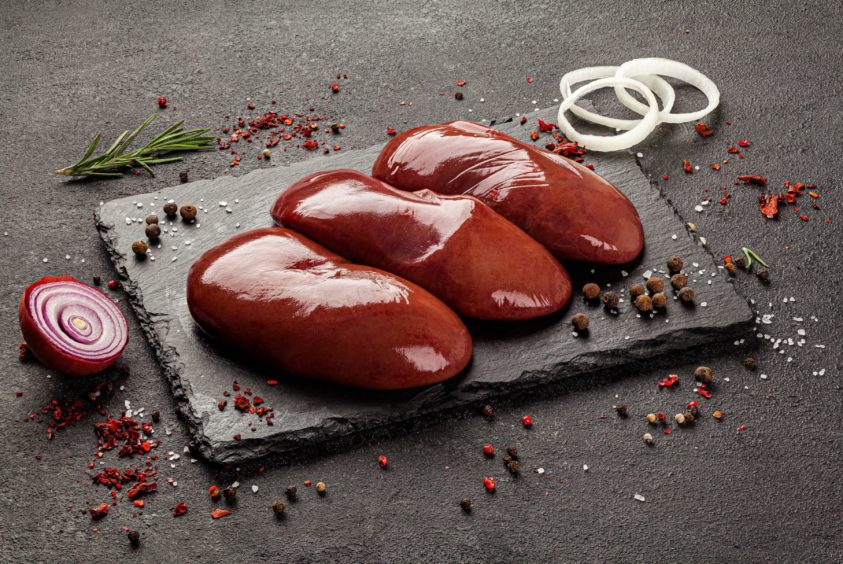
Ingredients
- 1 kg lambs’ liver, carefully trimmed of all membrane/tubes and cut into chunks
- 6 onions, each skinned, halved and very finely sliced
- 3 tbsp olive or rapeseed oil
- 1 large polybag, filled with 2 fairly level tbsp flour; 1 tsp salt and 15 grinds of black pepper
- 2 tbsp medium-dry sherry
- 1 small tub of full-fat creme fraiche
Method
- Heat the oil in a wide saute pan over moderate heat.
- Fry the onions, stirring occasionally, for 30-35 minutes.
- Once the onions are wilted and slightly caramelised, add the sherry. Cook for a further 5-10 minutes.
- Put the trimmed chunks of liver into the polybag with the seasoned flour. Seal the bag and shake hard to coat each bit of liver.
- Remove the contents from the onion pan, and add another tbsp of oil.
- Fry the floured liver over a high heat, turning each bit over. This should only take 2-3 minutes.
- Add the onions back to the pan with the liver; add the creme fraiche and let it bubble.
- Serve and enjoy!
More from Lady Claire…
